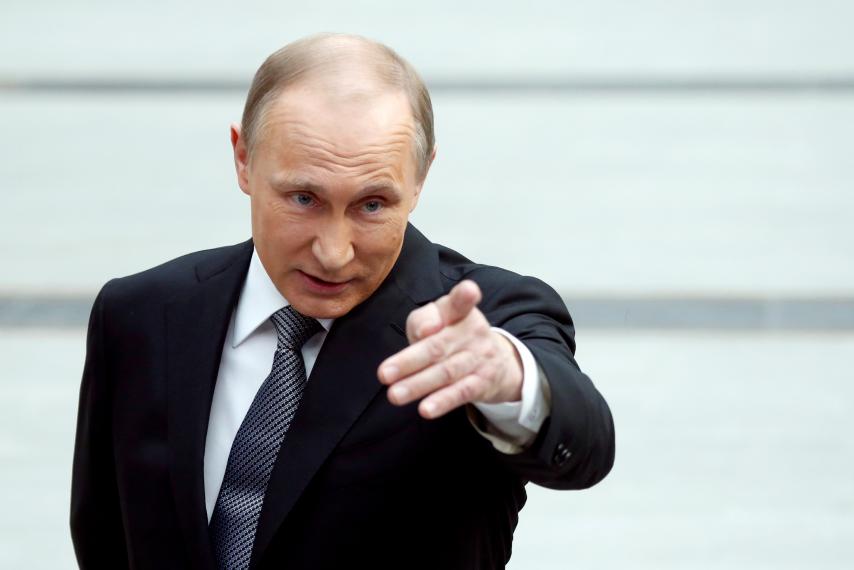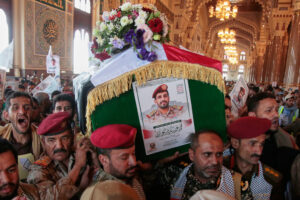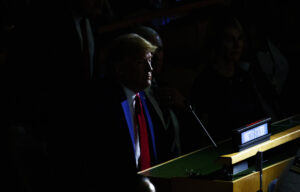Russia’s exit from Syria: Mission unaccomplished?

Picture by Maxim Shemetov | Reuters

Russian President Vladimir Putin announced on March 14 that he would begin to remove his troops from Syria, claiming that he had achieved all of the objectives that prompted the country’s military intervention last September.
Putin may have removed a small number of contingency forces immediately following his announcement, but it is now apparent that Russia is not exiting at all. Russian news outlets recently reported that advanced Ka-52 and Mi-28N helicopters were sent to Syria for combat on March 31. Additionally, the Russian military continues to launch airstrikes, train Syrian government forces, man the bases in Latakia, Hmeynim and Tartus, and deliver military technology to Assad. Regardless of what one thinks about Putin’s self-proclaimed achievements in Syria, his recent actions show that he will remain very much involved.
Russia’s heavy airstrikes have strengthened considerably the position of Syrian President Bashar al-Assad, who had previously lost territory to ISIS and various other opposition and rebel forces. Russian forces and Iran-backed militias helped Assad regain territory in Aleppo, Palmyra and the Latakia Province. But the stability of Damascus remains in question and many obstacles obstruct the path to peace. With Assad refusing to negotiate with rebel factions, the Kurds lacking a seat at the negotiating table, and the ceasefire falling apart, the end of this conflict does not appear to be in sight.
Putin’s words evoke memories of a similar premature end-of-war announcement in May 2003, when former U.S. President George W. Bush declared that major combat operations in Iraq were concluding. As he stood in front of a red, white and blue “Mission Accomplished” sign, Bush spoke of a “job well done.” Just a couple of months earlier, the United States had invaded Iraq to overthrow Saddam Hussein, the country’s authoritarian leader, as part of the global fight against terrorism.
At the time of Bush’s announcement, Hussein had been successfully deposed. But it took another eight years for the Iraq War to officially end. Even today the United States still conducts “advise-and-assist missions for Iraqi security forces,” as the Pentagon admitted last October.
Even though Putin is propping up a dictator and Bush knocked one down, both leaders claimed victory before the dust could settle. In fact, their premature announcements disregard a hard truth: the Middle East contains sources of vital interest and concern for both Russia and the United States and, as long as those interests and concerns remain, the two countries will be entangled in the sectarian conflicts that consume the region.
Putin claimed that countering ISIS in order to protect national security was the predominant reason for entering the Syrian conflict. Bush cited similar concerns to justify operations in Iraq, naming Hussein’s alleged possession of weapon of mass destruction and ties to Al Qaeda.
But in both instances there were also other underlying factors motivating the two leaders. In deciding to intervene in Iraq, Bush sought to disarm an area of strategic interest for the United States and establish a democracy that would allegedly influence the region. Such a set-up would also give the United States continued access to the natural resources and strategic waterways in the region.
Security experts Paul Rogers and Richard Reeve argue in a report for Oxford Research Group that Putin intervened in Syria to prop up Assad and to showcase Russia’s military stature beyond its immediate borders. This could explain why 90 percent of Russian airstrikes targeted anti-government rebels—not ISIS. Putin fears that if Assad is deposed, Sunni extremists or a Western puppet government will assume power and deprive Russia of a strategic ally. This would also cut off Russia’s access to strategic bases in Latakia and Hmeynim and its vital naval port in Tartus, which is essential for military operations beyond the Bosporus Strait.
In Syria Putin wants to prop up a pro-Russian government that he can influence, just as the Bush administration wanted a pro-Western government to replace Hussein’s regime in Iraq. But, as the United States can attest, the six months and $480 million Putin spent might not be enough to achieve this goal. Two U.S. administrations spent about 13 years and upwards of $2 trillion in Iraq, and spurred more problems there than existed before. The vacuum left in the post-Saddam era has allowed terrorists to thrive. The United States installed a weak, ethnically divided government, which has also aggravated existing divisions within Iraq.
By bolstering Assad through military operations, Russia may face a similar future in Syria. Putin’s actions may prolong the war, since many of the polarized sects that are proliferating across the country have a common goal: toppling Assad. And with the unpopular Syrian leader still in power, ISIS is more likely to sustain itself as an opposition to the dictator.
On the other hand, ISIS remains the “worst option” for governing Syria which benefits Assad since he is seen as the lesser of two evils. As long as Russia continues to provide support for Assad, the various conflicts between extremists, rebels and the government will continue. Russia is simply adding fuel to the fire.
When he announced his withdrawal, Putin held a triumphant ceremony in the Kremlin to commend the “victory” in Syria and honor the Russian military. If the U.S. experience in Iraq can serve as a cautionary tale, premature celebrations do not always bode well. Russia’s exit from Syria will not be as quick and painless as the Russian government may have expected.
Danielle Warren is an assistant at NYU Law School and is pursuing her Master’s degree in International Relations at NYU. Her regional focus is the Middle East and North Africa and her areas of research include women’s rights and international law. Previously, Danielle interned as a writer for The Borgen Project, a nonprofit organization that focuses on the global poverty crisis. She graduated summa cum laude from Rutgers University with a degree in Political Science and a minor in Women and Gender Studies.




